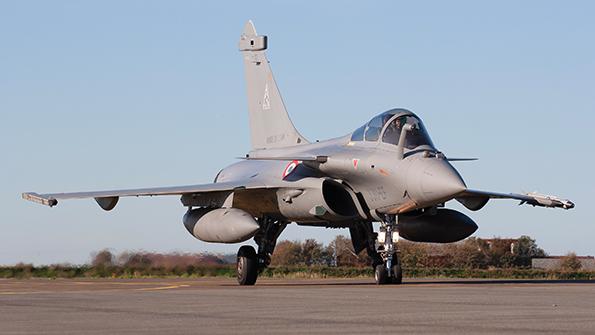
Dassault’s Rafale is likely to be France’s only combat aircraft during the 2030s before introduction of the New-Generation Fighter component of the FCAS.
Every July 14, French troops march along Paris’ famous Avenue des Champs-Elysees, and combat aircraft swoop low overhead to demonstrate the country’s military prowess.
But this year’s Bastille Day celebrations also look set to signal the country’s resolve to become a pillar of European security in the face of the renewed threat from Russia and strategic competition from China.
- Delivery rates for Rafales, UAS and helicopters tempered
- Air defense and standoff weapons to benefit from LPM
The government’s clean-sheet military programming law (LPM) calls for France to spend €413 billion ($442 billion) on defense between 2024 and 2030, an increase of 30% from the €295 billion in the previous cycle of 2019-25.
The extra funding will prepare France for what President Emmanuel Macron described in January as high-intensity warfighting, instead of the conflicts of choice it has entered over the last 20 years in Afghanistan, Africa and the Middle East.
Macron said France’s armed forces need to be ready for “more brutal, more numerous and ambiguous wars” (AW&ST Jan. 30-Feb. 12, p. 27).
While beefing up the country’s nuclear deterrent, the LPM is expected to deliver modernization of the three armed services and strengthen intelligence-gathering and cybercapabilities.
The devil is in the details, however, and parliamentary hearings have already hinted at potentially adverse consequences for some of France’s key aerospace programs, with programmatic milestones appearing likely to be postponed in favor of accelerating others.
Targets for the purchase of Dassault Rafale fighters, set in 2018 for 225 aircraft (185 for the Air Force and 40 for the Navy) to be in service by 2030, have been tempered. The latest 2030 objective has a target of 178 aircraft; about 137 for the Air Force, 41 for the Navy.
The target of 225 Rafales has been shifted to 2035, while 48 Dassault Mirage 2000Ds will be refurbished, rather than the 55 originally planned. These also will be withdrawn in the 2030s, leaving France with just a single-type fleet of combat aircraft until the arrival of the three-nation Future Combat Air System (FCAS) in 2040.
Plans for acquisition of medium-altitude, long-endurance uncrewed air systems (UAS) also face radical adjustment. Eight systems for 24 airframes initially were planned for 2030, but this has been reduced to five systems, including four MQ-9 Reaper systems from General Atomics and one Eurodrone system being developed by Airbus, Dassault Aviation and Leonardo. The light surveillance and reconnaissance aircraft program also has been scaled back, since the LPM foresees a need for only three intelligence, surveillance and reconnaissance system-equipped Beechcraft King Air 350s by 2030, not eight as initially planned.
Helicopter programs also face adjustment. The Joint Light Helicopter program projected the delivery of around 169 Airbus H160M Guepard helicopters to be in service by 2030, but the LPM looks set to delay deliveries, with just 20 helicopters arriving by 2030 and 70 delivered by 2035. Reports also suggest that the Tiger Mk. 3 attack helicopter upgrade program may be scaled back in terms of scope of the upgrade and the number to be updated. Airbus has confirmed that the Tiger program is part of the LPM discussions with the French government and is “ready to work on possible ways of optimizing its [the Tiger Mk. 3 program’s] costs.
Specifics on how the LPM money will be spent will be revealed on Bastille Day, but a greater focus is likely on ground-based air defense, UAS and defenses against them, loitering munitions and standoff weaponry. At the Globsec Bratislava Forum on May 31, Macron called on European nations to invest in standoff weapons to “strengthen our [European] security . . . and give us an asset for all future negotiations.” Macron said he was keen to initiate discussions with European partners who would be “interested in exploring cooperation in this [standoff weaponry] area” but did not say how such a capability could be addressed.
France’s armed forces are equipped with both air-launched and sea-launched conventionally armed long-range cruise missiles and are working with the UK on developing a new generation of air-launched cruise missiles through the bilateral Future Cruise/Anti-Ship Weapon project. The LPM likely will lean heavily on building up France’s defense industry, with Macron emphasizing France’s strategic autonomy and military sovereignty.
“We only possess with certainty what we produce,” he told the forum.
—With Helen Chachaty
